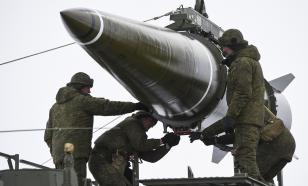Chechens Landing on the Banks of the Danube
 The growing influx of Chechen refugees, and the accompanying problems, is becoming a source of concern in Austria.
The growing influx of Chechen refugees, and the accompanying problems, is becoming a source of concern in Austria.

Russian emigrants mainly arrive in Austria from Poland and the Czech Republic, as a rule after applying for political asylum. However, although these countries' authorities speak out in support of "the Chechens' just struggle", they are unwilling to back up their words with actions and allow the Chechen political immigrants to stay. The press has frequently featured articles about the Polish and Czech authorities' heartless treatment of Chechens, who are allegedly forced to live in special camps behind barbed wire. Under the pretext of this ill treatment, Chechen refugees abandon the sites assigned to them by these countries' governments and illegally cross the Austrian border.
According to official data, over 3,000 asylum seekers, in the main from Chechnya, have arrived in Austria from Russia this year. A law prescribes that Russian nationals coming to Austria should be distinguished between "Chechen Russians" and "other citizens of the Russian Federation" in their registration documents. However, the Austrian authorities only register Chechens as citizens of the Russian Federation, thus ignoring their ethnic identity.
The main reason for this is Austria's lack of Chechen translators and experts on Chechnya's problems. Consequently, this means that refugees cannot be identified correctly and their backgrounds cannot be checked.
Austrian experts believe that the problem arose after the Austrian government adopted a law on "safe countries" in early 2003. This category includes the Russian Federation, with the exception of the Chechen Republic. Austria has assumed obligations to shelter political refugees of the latter.
In this alpine country, situated on the River Danube, refugees receive state benefits and are accommodated in special camps or in private hotels and boarding houses. There are five refugee camps: Traiskirchen, Vorderbruehl, Raichenau (Lower Austria) and Bad Kreuzen and Thalhaim (Upper Austria). The camps can accommodate 1,300 refugees. The largest camp, Traiskirchen, can accommodate 850 people.
Most Chechen refugees live in private inns and boarding houses. Out of the total of 149, 16 are in Vienna, 36 in Lower Austria, 21 in Upper Austria, 30 in Styria, 10 in Burgenland, 13 in Carinthia, 10 in Salzburg, 8 in Tyrol and 5 in Vorarlberg. The Austrian authorities do not rule out that there might be former warlords and criminals among the refugees, so they make various attempts to separate them and avert possible conflicts in the crowded sites.
Interestingly, the situation is similar to events in the 1990s, when Austria received masses of Muslim refugees from Bosnia, Herzegovina and Albanians from Kosovo.
Today, the Chechens can expect to face the same fate as the Bosnian and Albanian refugees, most of whom were not offered political asylum to the full extent in Austria and had to return home after the conflicts had been settled there.
Subscribe to Pravda.Ru Telegram channel, Facebook, RSS!


